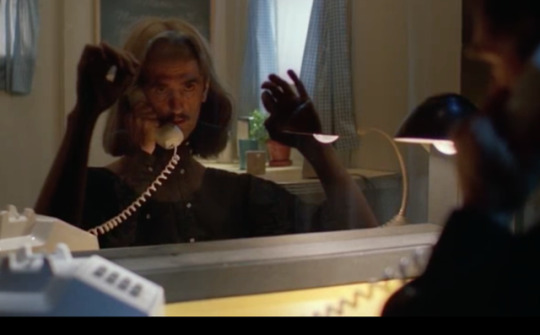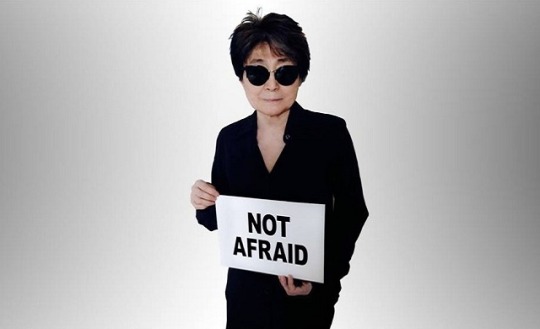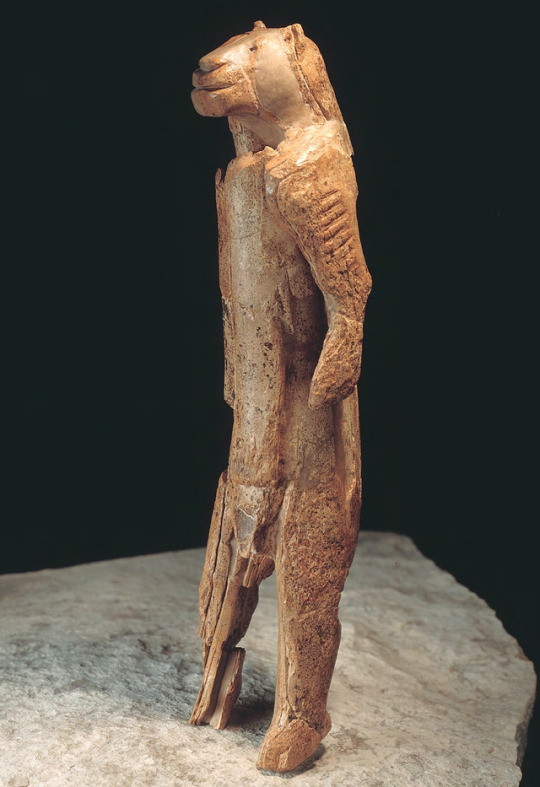Text
Blog post 8
To reflect on and summarize 21st century sculpture as a whole, is an absurd task, but is important for the understanding of art. It is not apt to support and create categories to rigorously organize artists into rigid groups but it is important to study the categories that have been used to view the history of art. It is this study of a study that retains us to the anti-category of “post”. Ostensibly, the study of art today concerns a direct study of the world, or a nation within that world in its own time, hence “contemporary”. The confusion of the word temporary with modern arises from a perception of the fixed meaning of words. If you were to describe modern design in furniture you might call it 20th century modern yet some people insist on referring to contemporary art as modern art, perhaps they mean current? It is what modern meant then, in say the 30s, but the meaning of modern grew and developed into a reflection of its own time now past. Modern was an almost anti-cultural achievement- supposing the realization of an objective world which could b shared universally through the lens of art. Whereas modern art did bridge the pan European gap of culture it smothered in the end of the 19th century, it was wholly dismissive of artists from cultures beyond the scope of Europeanism, instead appropriating the products of Japanese painting and African sculpture to widen the European view. While that did work to initiate the groundwork for an understanding of collective human culture, it also succeeded in eventually bringing light to the fact that the collective human experience is ultimately subjective and as individualized and specific as we (humans) are numerous. This initiated the current postmodern discourse which has supposedly remained dominant since some transitionary time in the 70s. So to reflect on 20-2st century sculpture as a whole, my time asks me to reflect on today and specifically the problems of today. Yet, as a white passing, cis person, unpursued and a non-refugee, the problems of my today are primarily the problems of others and the problems of tomorrow. The problems of tomorrow (global warming) must be dealt with today. This engenders a new art of visualization and actualization through action in the present. Artists must now consider what it means to make for example a film in the present day that is to be shown to an audience in the future which even a few months or a year or day away might be too late. What does it mean to edit of it is done in the present with an audience? How does this relate to our own self editing? Thank you caterina for catalyzing that last thought, I will certainly use it.
0 notes
Text
Blog post 7
Dia beacon
The fortress of minimalism houses an archive of achievement including artists such as Richard Serra, Robert Morris, Walter de Maria, Louise Bourgeois, Bruce Nauman and others. The organization of the museum is rather garage like with the attitude of the art being to inhabit the space through an almost accident like mode. The Bruce Nauman occupies the basement and imparts a spooky vibe to the visitors of these esteemed halls. The light tube pathway room, I thought, had missed the participative mark that the art, and much of Naumann’s work for that matter requires. I wanted it to be a space inhabited by people in a gathering like way, not to become secondary to social performances, but rather to be activated by the audience’s will to explore the possibilities of hanging out in that space. The fact that we were told how to experience the art (walk around the edge until you see a path open up) by a museum guard already initiated the social interactive aspect of the work but retained it, as well as our wills, pushing the experience into a reflection of my own submission to the walls of the institution. Obviously, as you can tell from my writing about it, I did not appreciate this focus, not because I don’t view it as part of the art, but rather I just felt it was artificial- asking to lead me to view the same conditions elsewhere in my life but rather than point me towards a direction of awareness, I felt that it was making me feel that I was aware of this institutional phenomenon but distracting me with an artificial example so that I could not relate it to real examples.
The rest of the Bruce Nauman work I found particularly creepy.
The Richard Serras were delightful
The Smithson was probably one of the more important aspects of the tip to dia as it contextualizes his work much better than the exclusively Nonsite experience of it I had had previously. I had a sense of site there despite the fact that his pile of sand did not erupt from underneath the concrete floor and was actually highly moveable. It had a similar quality to Robert Morris’s work with felt. That is that each time the felt by Morris is moved it cannot be recreated directly and must be facsimiled. Similarly the sand in Smithson’s sand pile is entirely mutable whereas the mirror is fixed except for it’s image.
0 notes
Text
Blog Post 6

0 notes
Text
Blog Post 5

0 notes
Photo

this is the first image which appears under the google image search “readymade”
0 notes
Text
Blog Post 3
Marcel Duchamp coined the term ready made because the world needed some framework to understand his action. A common misconception is that the selective act with which Duchamp deemed his objects art was somehow different from the way art has always been made. It is even erroneous to claim that objects were Duchamp’s art. Art has always been made of ideas which are pushed through the boundaries in the collective mind. There is no difference between the method with which Duchamp selected his fountain and the method with witch Vermeer selected light. A more pressing concern is the persistence of people’s inability to accept the readymade. Among the things in this world I understand the least is the argument “that’s not art.” It amazes me that anyone would reject Jeff Koon’s vacuums on the basis that the vacuums were already in existence as forms before they were selected as art. In that piece (the vacuums) the question of the readymade is specifically addressed. Why is that vacuum art and the one at my house isn’t?
Koon’s vacuums are from like the eighties or something. Their lungs are pristine. As objects, they are removed from the discourse of use- forever in a state of potentiality in a way only an art object could be. So why is there anyone living within western society who would question the validity of a readymade as art? Why did Duchamp need to give that specification in the first place?
The answer is a cyclical system of neglect. Art history through high school ends with modernism. Nowhere is there any basis for understanding contemporary art within the curriculum. Unless one seeks art out with an open mind, they will not find it. An open mind is unlikely given that one naturally feels block out from the discourse occurring within the art world. Teachers are not taught it and thus can’t teach it- and the cycle magnifies. This is how my sister (studying data analytics) can claim no understanding of John Baldessari (who is like sixty) while still sharing memes with me regularly. I am utterly sick of people arguing with me that Andy Warhol successfully duped the world into giving him fame without producing anything real. But it isn’t their fault, per say, but rather a symptom of a greater failure. The only other explanation I can think of revolves around an idea that the concepts involved in art are only apprehensible by a certain psychic type of person. Which I don’t believe.
0 notes
Text
History Of culture Post 2
It is hard for me to understand what is meant by the prompt: Validity of 19th sculpture in the 20th century. Presumably the question is : is 19th century sculpture valid in the 20th century? Some variations on this theme could include A) questioning whether it is valid to make “19th century sculpture” (figurative-object oriented, single sculpture on a pedestal relationship of parts to a whole) sculpture in the 20th century, and B) Asking whether or not sculpture from the past in general relates to our lives today. A) If I made a statue of some figures, sculpted them from clay, considered how my treatment of surface and gesture related to the content of the work, blew them up in plaster and cast them in bronze would I be making 19th century sculpture? The answer is unquestionable no, as I am writing from the present, in 2018. What other parameters define a 19th century sculpture? The artistic trends and condition of a movement are confined to its historical context. If I “make art” in the same way Rodin made art, I am only deluding myself. Any attempt at sculpture in that mode would be entirely different in its intention than the original, as not only has Rodin’s art already been made and I know it, the conditions of my world have changed. That is not to say that is impossible or not worth doing to imitate Rodin, either as an exercise or as an aspect of another artwork. But, the question, or at least this variation of it- is meaningless. B) Why should we look at old art? I do not think about this question often, although I do see its relevance. There is a mentality I sense from my world which wants to take the past and throw it away. Begin anew, free from convention and ugly history. Indeed, the beauty of the past is for me always tinged with darkness and evil- most of its characters being complicit in systems of colonial domination, racism, sexism, and other evils. The lives of artists can be ugly and wrong and I believe in the importance of finding new ways of being. This all being said I don’t see how old art could possibly be irrelevant to my life today. How can I understand the present without understanding the past? Our understanding of our world and therefore our cognition itself is founded upon concepts which were developed through time by people. Its is integral to the use, revision and even dismantling of these concepts that we understand their human sources. Moreover, art is built as a continuum. Life is a continuum. To think we are incapable of experiencing old art is nonsense. Its just that much less interesting than what happens in our lives today.
0 notes
Photo
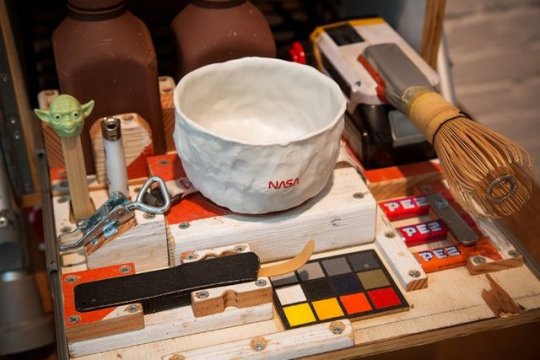

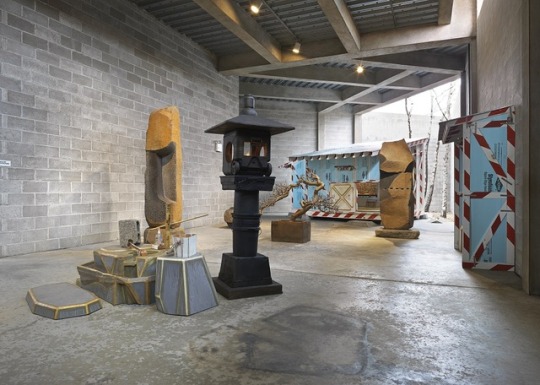
Tom Sachs Tea Ceremony
History of Sculpture blog post 1
0 notes
Text
History of sculpture post 1
Tom Sach’s tea ceremony is a synthesis of several fields. He has applied his method of asceticizing objects through the combination of them into usable things to the entire scale of the artwork. The alleged function of the artwork is as a tea garden on mars. That is to say that that is the hypothetical imaginative conceptual departure point/ excuse to produce art.
It is composed of an outer area or garden complete with koi pond, outhouse, rack for shoes, etc. Then the viewer enters into a smaller garden reserved for greater contemplation. Among the individual objects composing this environment is a large bonsai sculpted from cardboard tubes, toothbrushes, and cotton swabs cast in bronze. This individual object is intended for contemplation of hygiene and the body’s darkest orifices. The entire installation is of objects which are assembled from other objects. The item they assemble are conceptually drawn from sources such as quotidian everyday objects, the world of tools, the visual world of Nasa, and of course the traditional canon of the Japanese tea garden. The arrangements of the objects, responding to their position within the tea garden, are all entirely functional. There is a stand for cutting fire-wood combined with a saw and samurai helmet all composed of nasa and hardware themed objects. Tom combines mass manufactured objects with studio manufactured objects to create sculptures which are combinations of concepts. These sculptures function literally within their concepts and are framed by them yet also by their space (the gallery or museum). The result of this attention to every level of scale produces an effect of harmony and professionalism- mirroring the natures of both tea ceremony and space travel respectively.
The synthesis of tea garden and nasa is simultaneously a comparison of east and west, past and present that the viewer is surprised to find sharing so many similarities. Firstly, they are complicit in their attitudes towards nature and landscape. The tea garden is essentially a construct that is as artificial as a controlled environment such as that on mars or at nasa itself; Yet it is at once purposed for the appreciation of natural process, such as consumption in the koi pond and growth (in Tom Sachs case maintenance) in the bonsai tree.
In many ways Sachs preserves the spirit and function of the traditional tea ceremony in all the components of his garden – it can be interpreted back into the initial narrative of astronauts preforming tea ceremony on mars that it is this daily meditative act that gives them the tools to psychologically survive in their environment- or rather it is to who has given them these tools.
0 notes
